Powerful conservation tech tools are gathering more data in the field than ever before. But without equally powerful and effective data management and processing tools, that data - no matter how groundbreaking or interesting - will not be able to reach its full potential for impact.
Data management can sometimes seem intimidating to conservationists, especially those just getting started in the world of conservation tech or experimenting with new data collection methods. While every community member's workflow and preferred data management and processing methods may be different, this group can serve as a resource to explore what works for others, share your own advice, and develop new strategies together.
Below are a few WILDLABS events dealing with datasets collected from various conservation tech tools:
Nicole Flores: How do I get started with Wildlife Insights?
Jamie Macaulay: How do I analyse large acoustic datasets using PAMGuard?
Sarah Davidson: Tools for Bio-logging Data in Conservation
Whatever conservation tech tools you work with, and whatever your preferred data management methods, we hope you'll find something helpful and effective in this group when you become a member!
No showcases have been added to this group yet.
- @fredrickukpabi
- | he
I AM MR. FREDRICK UKPABI, FOUNDER/CEO OF IFYMOTIVATIONAL CHARITY FOUDATION. FROM NIGERIA. I AM GRADUATE OF PHILOSOPHY, CERTIFICATE ON INTERNATIONAL LEADERSHIP, AND INTERNATIONAL PEACE AND SECURITY. MENTAL HEALTH COUNSELLOR. I AM OPEN TO LEARNING AND IMPROVING MY SKILLS.
- 0 Resources
- 0 Discussions
- 3 Groups
- @ahmedjunaid
- | He/His
Zoologist, Ecologist, Herpetologist, Conservation Biologist





- 74 Resources
- 7 Discussions
- 25 Groups
- @Jeremy_
- | He/His
Recently teamed up with https://www.earthtoolsmaker.org/ founder



- 0 Resources
- 16 Discussions
- 4 Groups
- @Dauson_M
- | Mr
Dauson Msumange is a social enterpreneur, founder and director of Tanzania Eco-Tech And Conservation Hub (TEACH).

- 0 Resources
- 1 Discussions
- 23 Groups
- @Freaklabs
- | He/Him
Freaklabs
I'm an engineer and product designer working in conservation technology. I specialize in technology for landscape restoration and wildlife behavioral ecology.



- 1 Resources
- 307 Discussions
- 20 Groups
Founder at Hex & Futures Wild, designing nature tech
- 0 Resources
- 4 Discussions
- 2 Groups
Recently Retired Software Engineer wanting to make a positive contribution to conservation.
- 0 Resources
- 1 Discussions
- 3 Groups
I'm a Sound Designer who works in Film and also a Field Recordist with a focus on recording nature and wildlife. Very interested in learning more about bioacoustics and the technology being used.
- 0 Resources
- 0 Discussions
- 2 Groups
Ecological and Spatial Data Scientist
- 2 Resources
- 0 Discussions
- 4 Groups
- @crazybirdguy
- | Him
Field Biologist at Yayasan Cikananga Konservasi Terpadu, Indonesia, with experience and interest mainly in ornithology, citizen science and bioaccoustic

- 0 Resources
- 10 Discussions
- 12 Groups
Soil science, droughts effect of poverty, human rights advocate, wage equality in Europe, Drones in Digital Education




- 4 Resources
- 11 Discussions
- 18 Groups
I'm a young agronomist/expert in the planning and management of protected areas at the start of my career in the conservation of terrestrial flora and fauna. I have good experience in plant management and production. My passion for biodiversity conservation has led me to acquire
- 0 Resources
- 0 Discussions
- 3 Groups
If you're a Post-Doctoral Fellow, a PhD student, or a member of the research staff interested in applying your computational skills to support active research publications, please read on to learn about the Cross-...
5 August 2025
Really liked this article on dataset evaluation and how we can move towards a more standardized and inter-operable nature data space.
5 August 2025
Article
Everything you need on the IUCN Red list is now accessible from R, outputted as tibble to facilitate data query, analysis, and visualization.
20 July 2025
Funding
2025 Ebbe Nielsen Challenge seeks innovations for open biodiversity data
17 July 2025
Link
Firetail now features a fresh account over at Bluesky - follow us for updates on animal tracking, bio-logging and, of course, upcoming releases and features!
26 June 2025
In this case, you’ll explore how the BoutScout project is improving avian behavioural research through deep learning—without relying on images or video. By combining dataloggers, open-source hardware, and a powerful...
24 June 2025
Careers
Rewilding Europe is seeking a Business Intelligence Analyst to support measuring rewilding impact through data automation, dashboards, and cross-domain analysis.
3 June 2025
HawkEars is a deep learning model designed specifically to recognize the calls of 328 Canadian bird species and 13 amphibians.
13 May 2025
Hi together, I am working on detecting causalities between land surface dynamics and animal movement by using satellite-based earth observation data. As this is might be your expertise I kindly ask for your support...
8 May 2025
The Convention on the Conservation of Migratory Species (CMS) is seeking information on existing databases relevant for animal movement. If you know of a database that should be included, please complete the survey to...
30 April 2025
Conservation International is proud to announce the launch of the Nature Tech for Biodiversity Sector Map, developed in partnership with the Nature Tech Collective!
1 April 2025
Funding
I have been a bit distracted the past months by my move from Costa Rica to Spain ( all went well, thank you, I just miss the rain forest and the Ticos ) and have to catch up on funding calls. Because I still have little...
28 March 2025
August 2025
October 2025
event
event
November 2025
event
June 2025
event
event
April 2025
event
March 2025
event
87 Products
Recently updated products
| Description | Activity | Replies | Groups | Updated |
|---|---|---|---|---|
| Hi @CourtneyShuert We support NOAA with AI for individual ID for belugas (but from aerial and from lateral surface too). If some of our techniques can be cross-applied... |
|
AI for Conservation, Data management and processing tools | 6 days 18 hours ago | |
| Hello Eugene, I just tried your service:Was wondering how possible will it be to have the option to upload a second image and have a comparison running to let the user know if... |
|
AI for Conservation, Camera Traps, Data management and processing tools, Software Development | 1 week ago | |
| You could just throw out that data, but I think you'd be doing yourself a disservice and missing out on some interesting insights. Are you training the AI with just pre-COVID... |
|
AI for Conservation, Animal Movement, Data management and processing tools, Human-Wildlife Coexistence | 1 week 6 days ago | |
| Do you thinks an AI could do that ?GitHub - naturalsolutions/ecoSecrets: ecoSecrets is a web application which enables users to manage their camera traps data |
|
Data management and processing tools | 2 weeks ago | |
| Wondering if anyone here has come across good guidance/frameworks/best practices/etc. for baseline conservation data management (beyond... |
|
Data management and processing tools, Protected Area Management Tools | 2 weeks ago | |
| Wow this is amazing! This is how we integrate Biology and Information Technology. |
|
Camera Traps, AI for Conservation, Build Your Own Data Logger Community, Data management and processing tools, Marine Conservation, Protected Area Management Tools, Geospatial | 2 weeks 4 days ago | |
| Here is a nice review on the use of camera traps in various ecological contexts:https://onlinelibrary.wiley.com/doi/toc/10.1002/(ISSN)2045-7758.ecological-insights |
+10
|
Camera Traps, Data management and processing tools | 1 month 1 week ago | |
| 15 years ago I had to rebuild the dams on a game reserve I was managing due to flood damage and neglect. How I wished there was an easier,... |
|
Drones, Conservation Tech Training and Education, Data management and processing tools, Emerging Tech, Geospatial, Open Source Solutions | 4 months ago | |
| Thanks Fadhilla! I met with your colleague Henrick at the booth. :-) |
|
AI for Conservation, Animal Movement, Camera Traps, Citizen Science, Community Base, Data management and processing tools, Early Career, Geospatial | 1 month 3 weeks ago | |
| Hi Jeremy,I am copying here a reply from Juliane Röder, who is not on the forum here: The GFBio VAT tool seems to do all the desired analysing and visualising stuff - but it... |
+32
|
Data management and processing tools, Camera Traps, Software Development | 2 months ago | |
| I'm excited to see this project begin; I think its focus on versatility and functionality for users in diverse environments will allow Trapper Keeper to have a broad impact,... |
|
Camera Traps, Data management and processing tools, Emerging Tech, Open Source Solutions, Software Development | 2 months 1 week ago | |
| HiThis is great! So just to double check - there is no way to join online? I would love to be part of this conference. Thanks, Els van Lavieren |
|
Community Base, Conservation Tech Training and Education, Data management and processing tools, Emerging Tech, Human-Wildlife Coexistence, Protected Area Management Tools, Wildlife Crime | 2 months 2 weeks ago |
Camera Trap Data Visualization Open Question
4 February 2025 3:00pm
12 February 2025 1:36pm
Quick question on this topic to take advantage of those that know a lot about it already. So once you have extracted all your camera data and are going through the AI object detection phase which identifies the animal types. What file formation that contains all of the time + location + labels in the photos data do the most people consider the most useful ? I'm imagining that it's some format that is used by the most expressive visualization software around I suppose. Is this correct ?
A quick look at the trapper format suggested to me that it's meta data from the camera traps and thus perform the AI matching phase. But it was a quick look, maybe it's something else ? Is the trapper format also for holding the labelled results ? (I might actually the asking the same question as the person that started this thread but in different words).
12 February 2025 2:04pm
Another question. Right now pretty much all camera traps trigger on either PIR sensors or small AI models. Small AI models would tend to have a limitation that they would only accurately detect animal types and recognise them at close distances where the animal is very large and I have question marks as to whether small models even in these circumstances are not going to make a lot of classification errors (I expect that they do and they are simply sorted out back at the office so to speak). PIR sensors would typically only see animals within say 6m - 10m distance. Maybe an elephant could be detected a bit further. Small animals only even closer.
But what about when camera traps can reliably see and recognise objects across a whole field, perhaps hundreds of meters?
Then in principle you don't have to deploy as many traps for a start. But I would expect you would need a different approach to how you want to report this and then visualize it as the co-ordinates of the trap itself is not going to give you much information. We would be in a situation to potentially have much more accurate and rich biodiversity information.
Maybe it's even possible to determine to a greater degree of accuracy where several different animals from the same camera trap image are spatially located, by knowing the 3D layout of what the camera can see and the location and size of the animal.
I expect that current camera trap data formats may fall short of being able to express that information in a sufficiently useful way, considering the in principle more information available and it could be multiple co-ordinates per species for each image that needs to be registered.
I'm likely going to be confronted with this soon as the systems I build use state of the art large number of parameter models that can see species types over much greater distances. I showed in a recent discussion here, detection of a polar bear at a distance between 130-150m.
Right now I would say it's an unknown as to how much more information about species we will be able to gather with this approach as the images were not being triggered in this manner till now. Maybe it's far greater than we would expect ? We have no idea right now.
Paper: Technology's social and structural effects in environmental organizations
10 February 2025 6:00am
Collecting interesting resources to visualise spatio-temporal data from wildlife observations
9 February 2025 12:21pm
🌍 explorer.land Beginners Webinar: Create your first project and funding opportunity
6 February 2025 1:05pm
Machine learning for bird pollination syndromes
25 November 2024 7:30am
3 January 2025 3:55am
Hi @craigg, my background is machine learning and deep neural networks, and I'm also actively involved with developing global geospatial ecological models, which I believe could be very useful for your PhD studies.
First of all to your direct challenges, I think there will be many different approaches, which could serve more or less of your interests.
As one idea that came up, I think it will be possible in the coming months, through a collaboration, to "fine-tune" a general purpose "foundation model" for ecology that I'm developing with University of Florida and Stanford University researchers. More here.
You may also find the 1+ million plant trait inferences searchable by native plant habitats at Ecodash.ai to be useful. A collaborator at Stanford actually is from South Africa, and I was just about to send him this e.g. https://ecodash.ai/geo/za/06/johannesburg
I'm happy to chat about this, just reach out! I think there could also be a big publication in Nature (or something nice) by mid-2025, with dozens of researchers demonstrating a large number of applications of the general AI techniques I linked to above.
6 February 2025 9:57am
We are putting together a special issue in the journal Ostrich: Journal of African Ornithology and are welcoming (review) papers on the use of AI in bird research. https://www.nisc.co.za/news/202/journals/call-for-papers-special-issue-on-ai-and-ornithology
Giving different types of labeled data to the community - solutions?
5 February 2025 4:19pm
Free/open-source app for field data collection
6 December 2024 2:04pm
4 February 2025 3:52pm
Awesome, thank you!
4 February 2025 3:57pm
Thanks! Essentially field technicians, students, researchers etc. go out into the field and find one of our study groups and from early in the morning until evening the researchers record the behaviour of individual animals at short intervals (e.g., their individual traits like age-sex class, ID, what the animal is doing, how many conspecifics it has within a certain radius, what kind of food the animal is eating if it happens to be foraging). Right now in our system things work well but we are using an app that is somewhat expensive so we want to move towards open-source
4 February 2025 4:26pm
Thanks! I am familiar with EarthRanger but wasn't aware it could be used for behavioural data collection
Technical Assistant (m/f/d) | Moveapps
4 February 2025 8:32am
Webinar: Wildlife Drones’ Dragonfly – Revolutionizing VHF Tracking Technology
3 February 2025 4:31am
Deliver stronger VM0047-aligned Nature-Based Solutions
31 January 2025 9:30am
The Minor Foundation for Major Challenges calls for "new and unexpected ways of communicating the need for transitioning to a low-carbon economy"
29 January 2025 9:23pm
Accessing the Global Register of Introduced and Invasive Species (GRIIS)
25 January 2025 4:39pm
Nature Tech Unconference
Living Data 2025
16 January 2025 6:30pm
Webinar: Drone-based VHF tracking for Wildlife Research and Management
9 January 2025 11:45pm
Which LLMs are most valuable for coding/debugging?
25 September 2024 5:48pm
4 October 2024 7:53pm
Thanks, Lampros!
29 October 2024 11:10am
When it comes to coding and debugging, several large language models (LLMs) stand out for their value. Here are a few of the most valuable LLMs for these tasks:
1. OpenAI's Codex: This model is specifically trained for programming tasks, making it excellent for generating code snippets, suggesting improvements, and even debugging existing code. It powers tools like GitHub Copilot, which developers find immensely helpful.
2. Google's PaLM: Known for its versatility, PaLM excels in understanding complex queries, making it suitable for coding-related tasks as well. Its ability to generate and refine code snippets is particularly useful for developers.
3. Meta's LLaMA: This model is designed to be adaptable and can be fine-tuned for specific coding tasks. Its open-source nature allows developers to customize it according to their needs, making it a flexible option for coding and debugging.
4. Mistral: Another emerging model that shows promise in various tasks, including programming. It’s being recognized for its capabilities in generating and understanding code.
These LLMs are gaining traction not just for their coding capabilities but also for their potential to streamline the debugging process, saving developers time and effort. If you want to dive deeper into the features and strengths of these models, you can check out the full article here: Best Open Source Large Language Models LLMs
9 January 2025 8:51pm
thanks kristy! super helpful list.
Video evidence for the evaluation of behavioral state predictions
17 December 2024 11:02am
19 December 2024 11:53am
Currently, the main focus is visual footage as we don't render audio data in the same way as we do for acceleration (also: the highly different frequencies can be hard to show sensibly side by side).
But In this sense, yes, the new module features 'quick adjust knobs' for time shifts: you can roll-over a timestamp and use a combination of shift/control and mouse-wheel to adjust the offset of the video by 1/10/60 seconds or simply enter the target timestamp manually down to the millisecond level. This work can then and also be saved in a custom mapping file to continue synchronisation work later on.
19 December 2024 12:59pm
but no "time scaling" adjustments to adjust a too "slow" or too "fast" video ?
19 December 2024 4:07pm
No, not yet. The player we attached does support slower/faster replay up to a certain precision, but I'm not sure that this will be sufficiently precise for the kind of offsets we are talking about. Adding an option on the frontend to adjust this is quite easy, but understanding the impact of this on internal timestamp handling will add a level of complexity that we need to experiment with first.
As you said, for a reliable estimate on this kind of drift we need at least 2 distinct synchronized markers with sufficient distance to each other, e.g. a precise start timestamp and some recognizable point event later on.
I perfectly agree that providing an easy-to-use solution does make perfect sense. We'll definitely see into this.
Announcement of Project SPARROW
18 December 2024 8:01pm
3 January 2025 6:48pm
Firetail 13 - now available
10 December 2024 10:55am
13 December 2024 3:31am
Thank you so much for looking into this issue quickly! Much appreciated.
17 December 2024 10:40am
I promised to keep you updated, and the article is now available here:
17 December 2024 10:42am
and a short contribution in this e-obs setup, where we used Firetail VideoSync to analyze motion-triggered camera footage:
Detecting Thrips and Larger Insects Together
16 December 2024 1:14pm
16 December 2024 2:32pm
16 December 2024 2:36pm
Yeah, I would expect that you might need to have higher resolution if the critters are very small. Still might be just a lens choice. But not up on this amount of lens difference, so don't know how hard it would be.
16 December 2024 2:48pm
So, updated the text a bit with images cropped at 100% zoom :) we are already happy with the time reductions we got, but... would like to get at least 90% time reduction instead of 70% :))) we know that with a very expensive and high power camera we could probably do it, so one approach we are thinking of is just taking a closer macro picture with a cellphone of let's say 1/3 or 1/4 of the sticky paper and use this data instead of everything... or take 2-3 pictures (but we don't want to waste time in sticking the images together).
AI Researcher / Doctoral Candidate
11 December 2024 1:45pm
Mirror images - to annotate or not?
5 December 2024 8:32pm
7 December 2024 3:18pm
I will send you a DM on LinkedIn and try to find a time to chat
8 December 2024 12:36pm
I made a few rotation experiements with MD5b.
Here is the original image (1152x2048) :

When saving this as copy in photoshop, the confidence on the mirror image changes slightly:
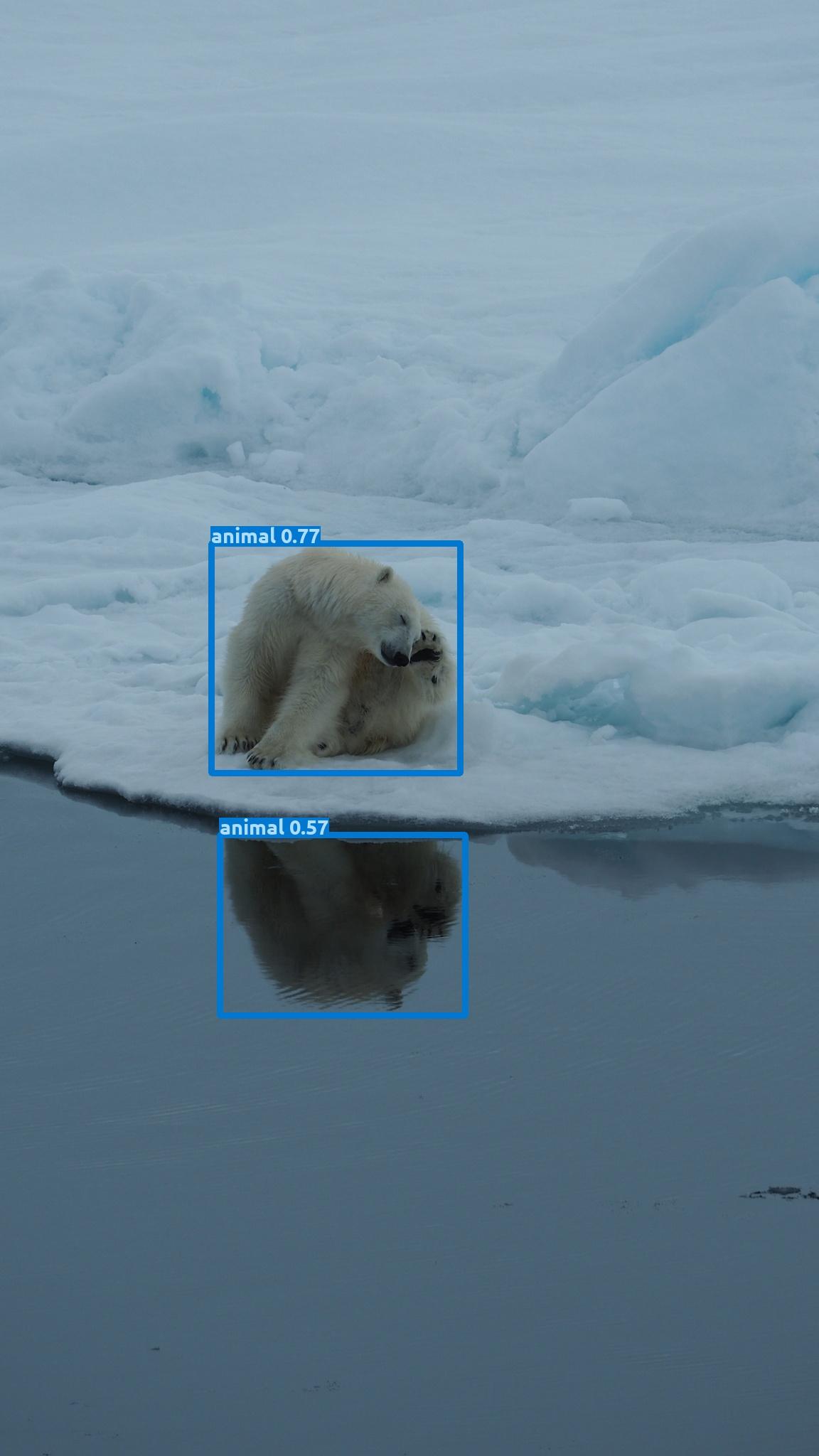
and when just cropping to a (1152*1152) square it changes quite a bit:
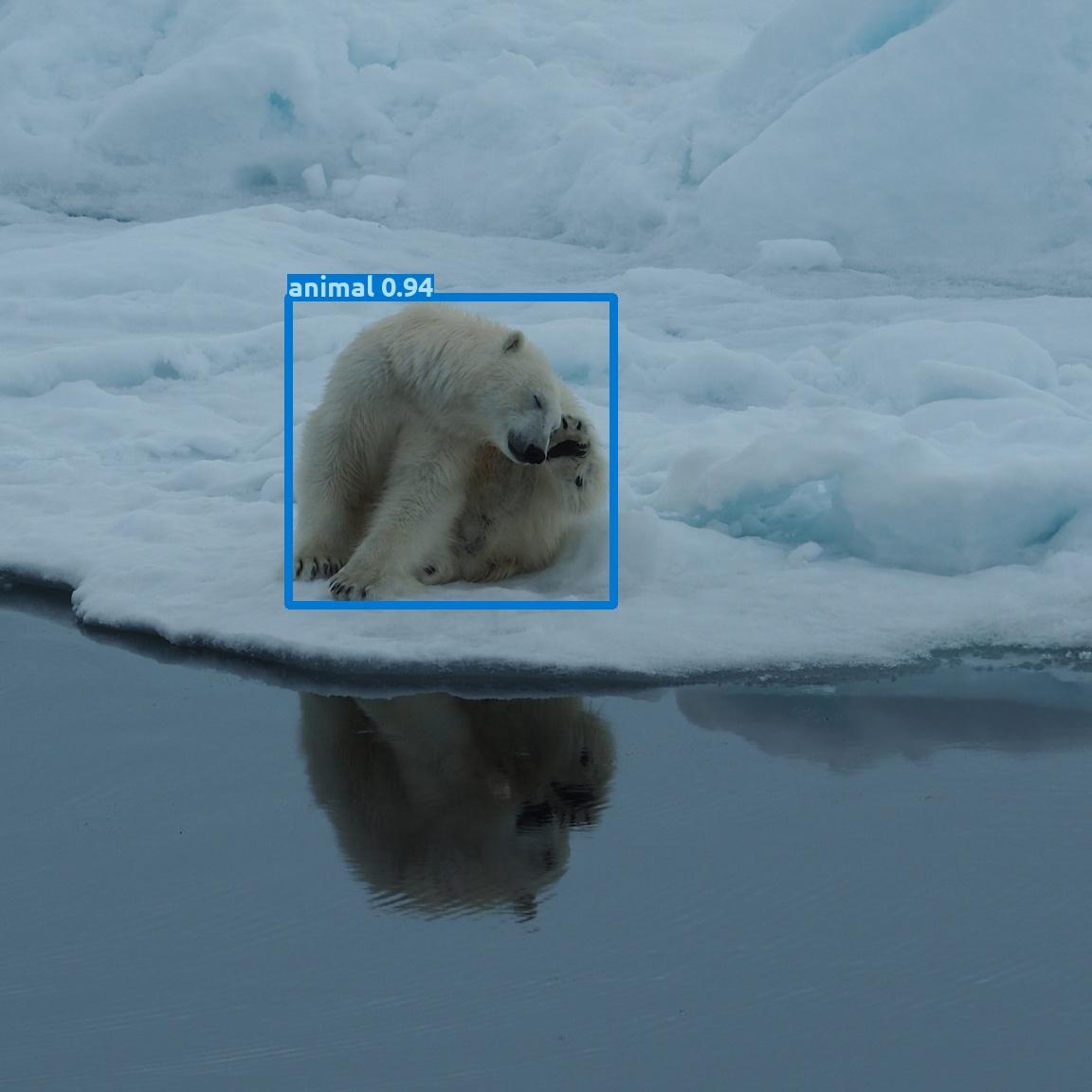
The mirror image confidence drops below my chosen threshold of 0.2 but the non-mirrored image now gets a confidence boost.
Something must be going on with overall scaling under the hood in MD as the targets here have the exact same number of pixels.
I tried resizing to 640x640:
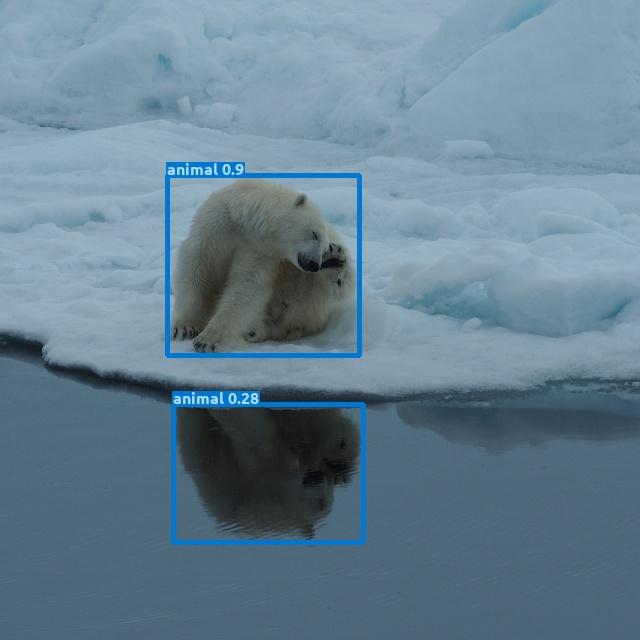
This bumped the mirror image confidence back over 0.2... but lowered the non-mirrored confidence a bit... huh!?
My original hypothesis was that the confidence could be somewhat swapped just by turning the image upside down (180 degree rotation):
Here is the 1152x1152 crop rotated 180 degrees:
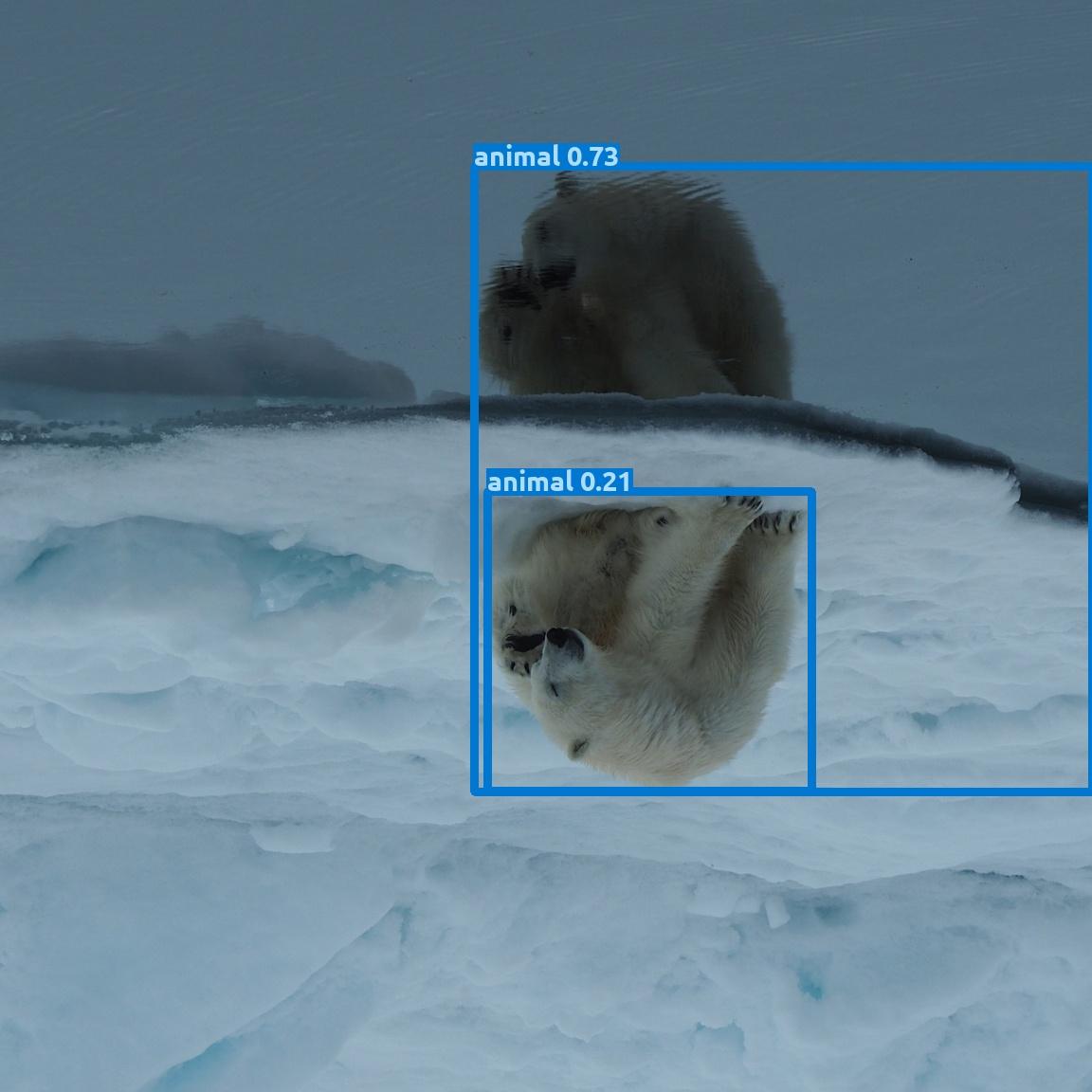
The mirror part now got a higher confidence but it is interpreted as sub-part of a larger organism. The non-mirrored polar bear had a drop in confidence.
So my hypothesis was somewhat confirmed...
This leads me to believe that MD is not trained on many upside down animals ....
- and probably our PolarbearWatchdog! should not be either ... ;)
9 December 2024 4:27pm
Seems like we should include some rotations in our image augmentations as the real world can be seen a bit tilted - as this cropped corner view from our fisheye at the zoo shows.
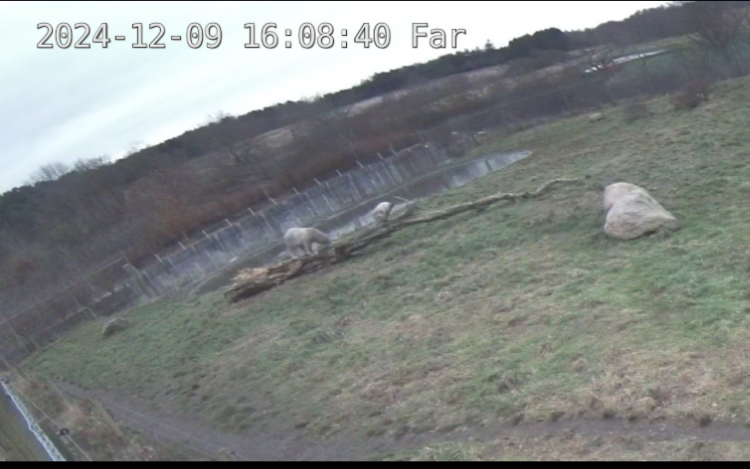
Fauna & Flora SMART Competences Consultancy
4 December 2024 2:21pm
Conservation Data Strategist?
20 November 2024 3:50pm
22 November 2024 2:28pm
Great resources being shared! Darwin Core is a commonly used bio-data standard as well.
For bioacoustic data, there are some metadata standards (GUANO is used by pretty much all the terrestrial ARU manufacturers). Some use Tethys as well.
Recordings are typically recorded as .WAV files but many store them as .flac (a type of lossless compression) to save on space.
For ethics, usually acoustic data platforms with a public-facing component (e.g., Arbimon, WildTrax, etc.) will mask presence/absence geographical data for species listed on the IUCN RedList, CITES, etc. so that you're not giving away geographical information on where a species is to someone who would use it to go hunt them for example.
29 November 2024 12:13pm
Hello, I am experienced in conservation data strategy. If you want to have a conversation you can reach me at SustainNorth@gmail.com.
29 November 2024 5:51pm
Bird Monitoring Data Exchange is a standard often used for birds data.
Recovery Ecology Post Doctoral Associate - San Diego Zoo Wildlife Alliance
26 November 2024 11:47pm
unsupervised machine learning to infer syntax and temporal organisations of animal vocalizations
7 September 2023 3:02pm
26 November 2024 3:41pm
Super interesting work! Maybe one day you will also be able to have a career as a science fiction writer. Lot of interesting outcomes can come of this. ❤️
Need advice on data for an app that recommends plants.
21 November 2024 1:47pm
21 November 2024 8:41pm
It's a really good question, Colleen!
Ideally, I would work with two developers, or at least one developer and one other party who knows what developing an app like this would mean. This will lower the risk that the developer answers your question too much in their advantage. So this is one reason why it is a good question, and maybe this is why you ask it. However, if you really trust your developer not to take advantage, then go with just her/him/they.
It's also a good question because there is no easiest way to go about this if you're on a budget. You mention that you do not have a tech background, so here comes some explaining. If I misunderstood, then please skip and continue at "Back to 'the easiest way to go about this'"
There are at least two things you should be really aware of when it comes to software development.
The first is that once the basic data structure is defined and the software built around it, it is extremely costly to change the data structure. It's like deciding after the car has been built, that the engine should go to the back of the car instead of the front.
The second thing is that the basic data structure is dependent on ( among other things, but I'd say these are the two most important factors ) the complexity of what needs to be achieved and the speed at which it needs to be done.
The difficulty is that the required complexity and the speed may change over time, which brings one back to the car and engine situation. Changes in complexity and speed requirements may be the result of many things, one of which is success. You get far more clients than anticipated, so the system needs to be scaled up. In addition, with more users come more feature requests ( this can work both ways: new features result in more users, and more users may result in more feature requests ).
There is no real solution to this problem ( well, except not growing beyond the point that the first design can handle ). When it comes to scaling up, one vendor may claim that their database back bone easily scales up. Maybe so - but it may come at a price and they may also underestimate your and their own future needs. When it comes to changes in complexity, additional features can in the beginning probably be added on without changing the basic data structure. Maybe an additional row of seats at the back of the car, a trailer hook, bigger lamps, a roof-rack, a trailer, suitcases on the rack. At some point the car will need a new and bigger engine to carry all those add ons and keep at the same speed.
Here is a prediction : the more you stress cheap and efficient at the beginning, the bigger these problems will be later on. But when the business is successful, there will be more money to invest in scaling up and redesigning. Obviously yes, but in terms of the car metaphor, you may find that you want the car to be kept running with all its added on features, while the engine is replaced and moved to the back. It may be possible, but perhaps out of reach of patience and the increased income.
Back to 'the easiest way to go about this':
Invest a little effort to find out not only what are the minimum requirements for the MVP, but also what else you or your clients may want in the future. The developer should then have these future requirements in mind (and future upscaling) when they start developing for the minimum ones. This means, develop a somewhat more generic data structure than what is necessary for the MVP. This will cost some more at the beginning but should save a lot later on. I'm writing 'should' not 'will' on purpose. It's a balancing act because taking too much into account has the risk of over-engineering for a future that may not happen, or develop differently than expected. Like I said, there is no easiest way out.
A few more detailed comments
If there is no API for a source, try to go around it if possible at the beginning. API's are made with some long term stability in mind. Websites and web pages not necessarily so or less so. They will require more monitoring and maintenance on the web scraping routines.
Perhaps the developer may not be aware of the necessary pre-work that needs to be done if the pre-work depends on biological knowledge needed to transform the data from your data sources into data that allows easy ( and fast ) calculation of results to the users.



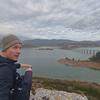






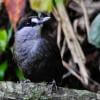
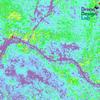










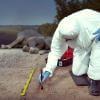

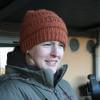
















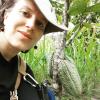







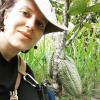












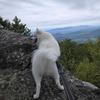





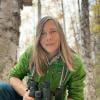

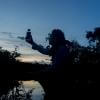

12 February 2025 12:31pm
Hey Ed!
Great to see you here and thanks a lot for your thorough answer.
We will be checking out Trapper for sure - cc @Jeremy_ ! A standardized data exchange format like Camtrap DP makes a lot of sense and we have it in mind to build the first prototypes.
Our main requirements are the following:
In the first prototyping stage, it is useful for us to keep it lean while keeping in mind the interface (data exchange format) so that we can move fast.
Regards,
Arthur